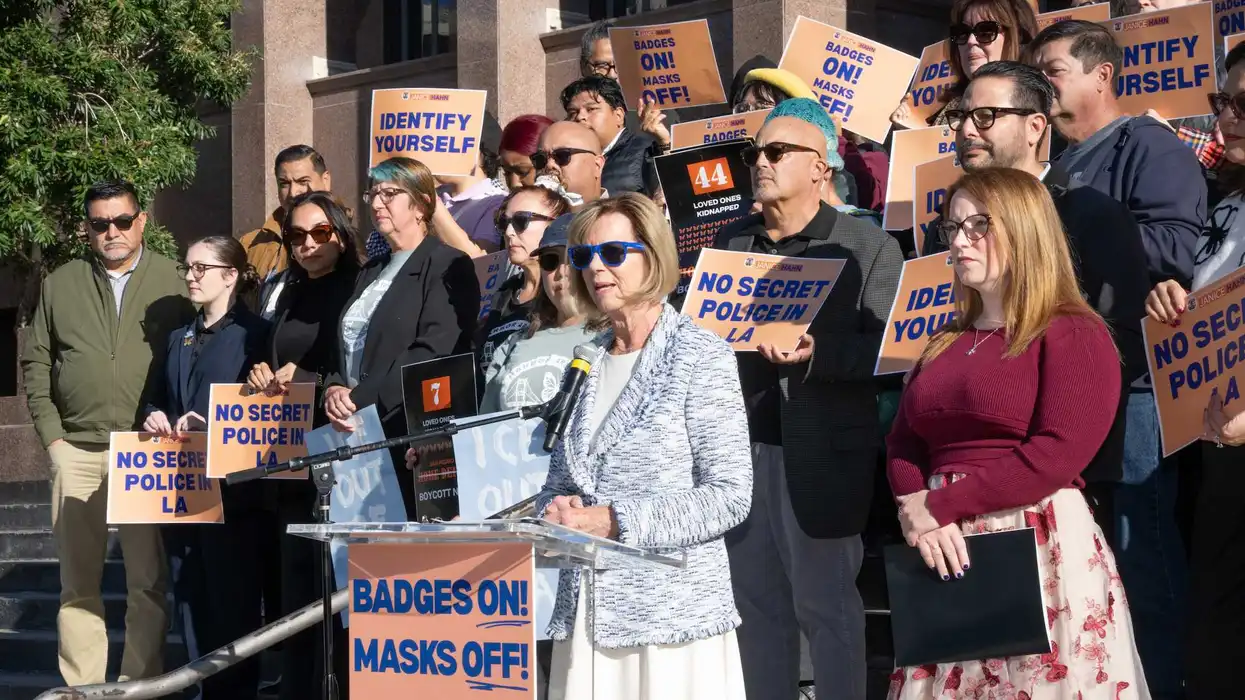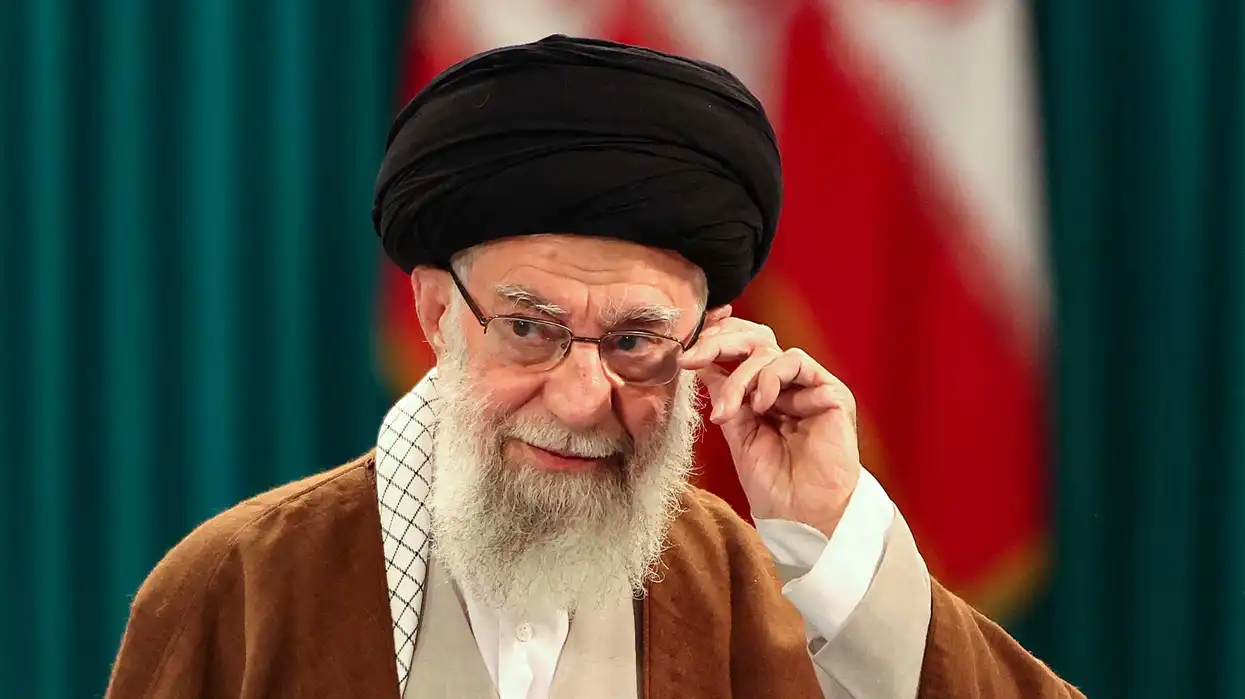© 2025 Blaze Media LLC. All rights reserved.
The two choirs are vastly different in style and come to liturgical music from very different backgrounds.
VATICAN CITY (AP) -- The Sistine Chapel Choir, whose boys and men sing for the pope at all his Masses, is about to get some illustrious company.
The Westminster Abbey Choir, the world-renowned chorus that last year performed at the wedding of Prince William and Kate Middleton, will join the Sistine singers at a special papal Mass on Friday in St. Peter's Basilica, a historic event seen as a perfect symbol of Christian harmony after centuries of discord.
It's the first time in its 500-plus year history that the pope's personal choir will sing as a single chorus with another choir, let alone one from the breakaway Anglican church.
And this isn't any ordinary chorus: The Westminster Abbey Choir represents some of the finest of the Anglican church's liturgical music traditions.
As a result, the symbolism of the choirs from the two churches uniting into one is enormous, particularly given Pope Benedict XVI's stated aim of trying to unite all Christians.
The Mass marks the feast of St. Peter and St. Paul and is the day in which newly appointed Catholic archbishops receive a woolen stole, known as the pallium, as a sign of their communion with the pope.
"It's the big Mass for underlining our links to the Holy Father, and to ask at that occasion for a non-Catholic choir to take part is deeply significant," said Monsignor Mark Langham, the Vatican official responsible for relations with Anglicans.
Anglicans split from Rome in 1534 after English King Henry VIII was refused a marriage annulment. A half-millennium later, the two churches remain divided on a host of issues, especially female bishops and openly gay priests.
The differences prompted the Vatican in 2009 to make it easier for Anglicans uneasy with the liberal bent of their church to convert, throwing another wrench in ecumenical dialogue.
Organizers of the historic performance have tried to downplay the differences or at least acknowledge that while deep theological problems remain, culturally the two churches can come together.
"In diversity you can find points of unity," said Monsignor Massimo Palombella, the choirmaster of the Sistine Chapel Choir. "And I dare say, it's not just that you can find it, you must find points of unity. To do this, we use culture."
That said, the uniting isn't going to be easy. The two choirs are vastly different in style and come to liturgical music from very different backgrounds. And to many ears, Westminster is simply better.
"It is a splendid choir," said the Rev. Jerome Weber, a Roman Catholic priest who reviews sacred music for Fanfare, the respected classical music magazine. Known for its precision, attention to detail and tonality, the Westminster choir is recorded twice a year by Hyperion, the British classical music label.
The Sistine choir, on the other hand, is simply of a lesser quality: warm as the Roman vocal tradition requires, but often loud with a "harsh, bombastic tone," he said.
Colin Mawby, the English composer, recently wrote a glowing review of the Sistine choir's May concert at the Roman Catholic Westminster Cathedral, saying the pope's singers had unfairly suffered from a bad reputation when in fact they were "a superb and expressive group."
"One tends to listen to the Sistine Chapel Choir with English ears and then foolishly compare it with our own, with their fussy attention to technical detail, detail that is often achieved at the expense of musicality," Mawby wrote in a review for the cathedral's magazine that was reprinted in the Vatican newspaper and is now featured prominently on the Sistine choir's website. "However the Sistine Choir isn't an English choir. It's Italian and reflects the Italian vocal tradition."
How the two will blend remains to be heard.
"I think it will be a challenge to sing with them," acknowledged Hugh Rowlands, a 13-year-old Westminster chorister who will be performing on Friday, and a day earlier at a private concert with the Sistine singers for Vatican officials in the Sistine Chapel itself.
He noted that the choir often sings with other English choirs, which are similar in style. Performing with foreign choirs is another matter. "It might be challenging but if we have our wits about us it will go well," he said.
Rowlands spoke at a reception Tuesday for the Westminster crew at the American Academy in Rome, designed to give the boys a relaxing start to a busy few days of concerts and services, the highlight of which will be Friday's Mass. The 19 boys played ping pong and bocce in the academy gardens, crawled down to an ancient Roman aqueduct on the academy grounds and inhaled plates of pasta with meatballs.
It was a welcome break from the daily grind for the choristers, who from the age of seven or eight are selected to attend the prestigious London choir school, where they live away from their families and carry a full load of academics while performing eight services a week, plus touring and concerts.
"There are some times when you can get very tired and you just wish you could sleep until noon when you wake up from a concert," said 12-year-old Benjamin MacLean. "But it is very fun and the experiences you get on tours like visiting the pope or meeting the president, it's amazing."
The 19 Westminster boys came to Rome along with 12 lay vicars, the adult men in the choir. They may well be overwhelmed by the 35 boys and 22 men in the Sistine choir.
James O'Donnell, the music director of the Westminster choir, said both sides would have to make some adjustments for the performance but that the music chosen - Palestrina, the 16th century Roman composer who represents the best of Renaissance polyphony - is common to the repertoires of both.
"We are different, but we have a lot of things in common despite the many differences," he said. "We don't want to turn into the Sistine Chapel Choir and they certainly don't want to turn into the choir of Westminster Abbey. But what we want to do is make music together."
Benedict himself was behind the decision to invite Westminster to Rome, so awed by the quality of the choirboys when they sang for him at Westminster Abbey during his September 2010 visit. He specifically asked that the choirs be united as one, rather than alternate during the performance as is commonly done, said the Very Rev. John Hall, dean of Westminster Abbey.
Palombella, the Sistine choirmaster, jumped at the chance, eager to open up his choir to outside influences and shed the Sistine's reputation as a historical relic closed to innovation.
"These meetings are good for both Sistine and Westminster," he said in an interview. "Because it makes us learn the precision and detail of the English choirs, and it makes the English learn the warmth and intensity that the Italian choir has."
O'Donnell, his counterpart in London, concurred.
"They are a very important, unique musical institution," he said. "And if they open themselves up to working with us and to other influences that they are open to at the moment, which will broaden their range and help them explore new avenues, then that can only be encouraged, as it must be for any musical ensemble."
The Westminster Abbey Choir's vocal precision is on display in this video.
Want to leave a tip?
We answer to you. Help keep our content free of advertisers and big tech censorship by leaving a tip today.
Want to join the conversation?
Already a subscriber?
more stories
Sign up for the Blaze newsletter
By signing up, you agree to our Privacy Policy and Terms of Use, and agree to receive content that may sometimes include advertisements. You may opt out at any time.
Related Content
© 2025 Blaze Media LLC. All rights reserved.
Get the stories that matter most delivered directly to your inbox.
By signing up, you agree to our Privacy Policy and Terms of Use, and agree to receive content that may sometimes include advertisements. You may opt out at any time.







